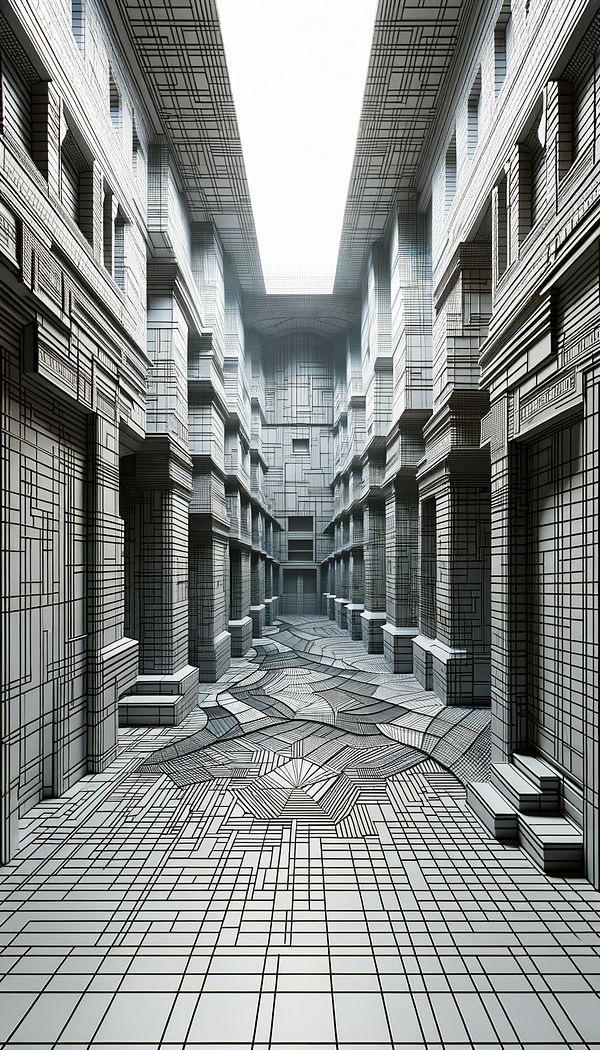What is Allyways Pattern?
Alleyways Pattern refers to a specific visual motif inspired by the narrow passageways found between buildings, often featuring repetitive geometric lines or shapes evoking the sense of narrow, linear spaces.
Description
The Alleyways Pattern is a fascinating concept in interior design that draws inspiration from the urban landscape, particularly the narrow passages carved between buildings in densely populated areas. This pattern is characterized by its unique ability to evoke a sense of depth and perspective through the use of repetitive geometric shapes and lines that mimic the visual experience of walking through an alleyway. Designers utilize this pattern to add visual interest and a dynamic element to spaces, often employing it in wallpaper, textiles, and flooring to create a sense of movement and continuity.
Implementing the Alleyways Pattern can transform a space by introducing a graphic element that is both modern and evocative of urban environments. It can be particularly effective in spaces aiming for a contemporary or industrial aesthetic, as the pattern’s linear qualities complement the clean lines and raw materials commonly found in these designs. Moreover, the pattern can serve as a visual connector between different areas of a space, guiding the eye along its defined pathways.
Usage
Alleyways Pattern is commonly used in wallpapers, textile designs, and flooring to add a unique and dynamic element to interiors. It can be seen in both residential and commercial settings, often adding a contemporary or industrial flair to the design. The pattern’s ability to create a sense of depth and movement makes it an excellent choice for spaces seeking to combine aesthetic appeal with a nod to the urban landscape.
FAQs
-
Is the Alleyways Pattern suitable for small spaces?
Yes, the Alleyways Pattern can be suitable for small spaces, especially when used thoughtfully. A smaller scale pattern or one applied to a single focal point can create depth without overwhelming the space.
-
Can the Alleyways Pattern be used in traditional style interiors?
While the Alleyways Pattern lends itself well to contemporary and industrial styles, it can also complement traditional interiors when integrated with elements that balance its modernity, such as classic furniture or rich textures.
-
How does the Alleyways Pattern affect the perception of space?
The Alleyways Pattern can influence the perception of space by creating a sense of depth and movement. The directional lines and repetitive shapes can elongate a space, making it appear larger or more dynamic.
Practical Application
When incorporating the Alleyways Pattern into your design, consider the scale and direction of the pattern in relation to the space. A larger scale pattern can make a bold statement in spacious rooms, while a smaller scale may be more suitable for intimate spaces. Additionally, the direction of the pattern can influence the perceived dimensions of the room, so choose accordingly to enhance the desired spatial effects. Coordinate the pattern with other elements in the room, such as furniture and decorative accents, to achieve a cohesive and balanced look.
-
Color & Patterns154 articles
-
Textiles & Upholstery252 articles
-
Flooring & Carpets48 articles
-
Wall Treatments & Finishes157 articles
-
RécamierA Récamier is a type of chaise longue featuring a high, curved headrest and a lower footrest without a backrest.
-
Classic StyleClassic Style is a timeless, elegant, and harmonious design philosophy that emphasizes symmetry, sophistication, and functionality.
-
RepetitionRepetition is a key design principle involving the repeated use of elements or motifs to create a sense of harmony and consistency in a space.
-
VarietyVariety in interior design refers to the quality of being different or diverse.
-
GothicGothic refers to a style that is characterized by intricate designs, pointed arches, and a heavy emphasis on verticality and light.
